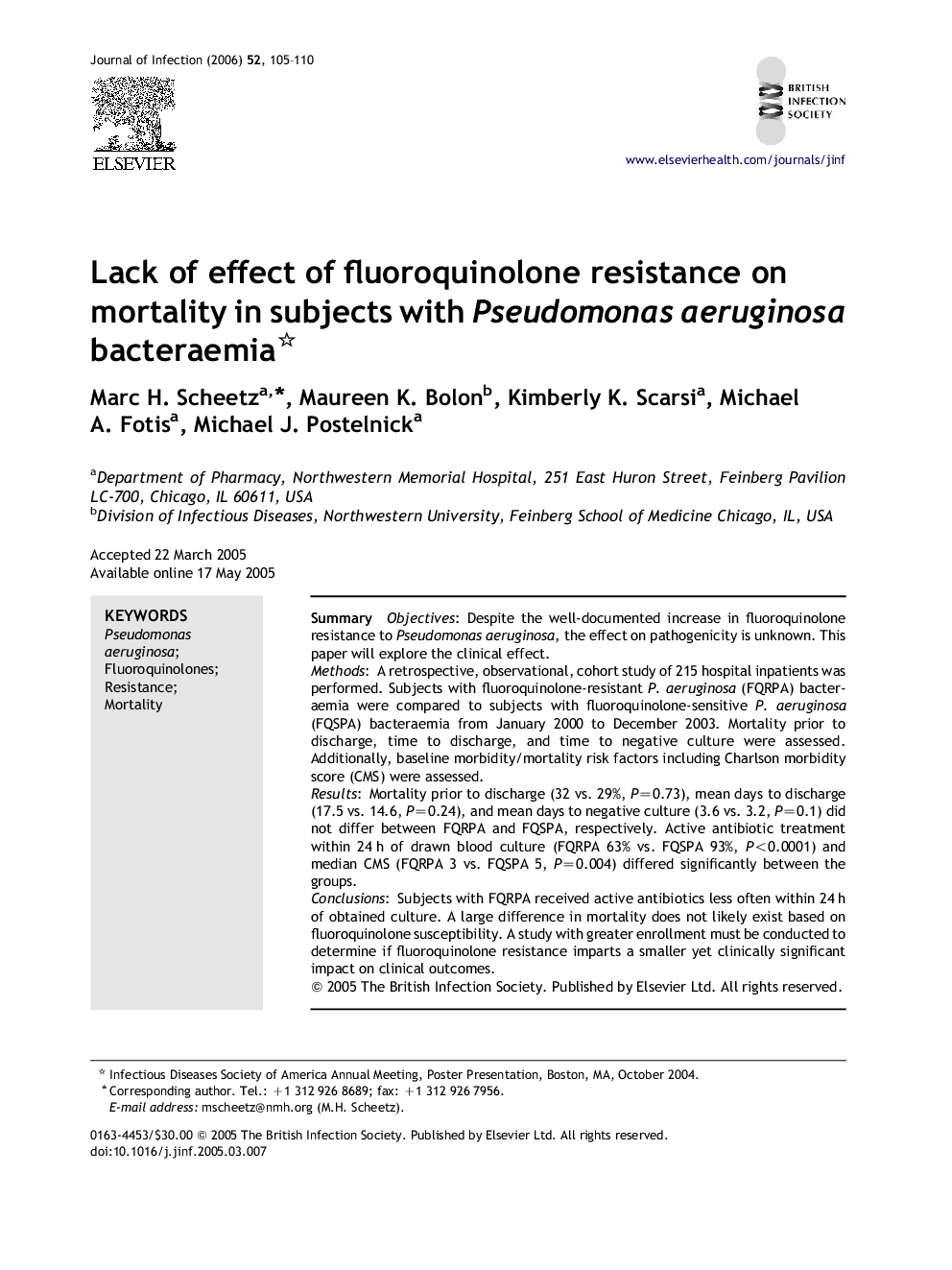| Article ID | Journal | Published Year | Pages | File Type |
|---|---|---|---|---|
| 3376119 | Journal of Infection | 2006 | 6 Pages |
SummaryObjectivesDespite the well-documented increase in fluoroquinolone resistance to Pseudomonas aeruginosa, the effect on pathogenicity is unknown. This paper will explore the clinical effect.MethodsA retrospective, observational, cohort study of 215 hospital inpatients was performed. Subjects with fluoroquinolone-resistant P. aeruginosa (FQRPA) bacteraemia were compared to subjects with fluoroquinolone-sensitive P. aeruginosa (FQSPA) bacteraemia from January 2000 to December 2003. Mortality prior to discharge, time to discharge, and time to negative culture were assessed. Additionally, baseline morbidity/mortality risk factors including Charlson morbidity score (CMS) were assessed.ResultsMortality prior to discharge (32 vs. 29%, P=0.73), mean days to discharge (17.5 vs. 14.6, P=0.24), and mean days to negative culture (3.6 vs. 3.2, P=0.1) did not differ between FQRPA and FQSPA, respectively. Active antibiotic treatment within 24 h of drawn blood culture (FQRPA 63% vs. FQSPA 93%, P<0.0001) and median CMS (FQRPA 3 vs. FQSPA 5, P=0.004) differed significantly between the groups.ConclusionsSubjects with FQRPA received active antibiotics less often within 24 h of obtained culture. A large difference in mortality does not likely exist based on fluoroquinolone susceptibility. A study with greater enrollment must be conducted to determine if fluoroquinolone resistance imparts a smaller yet clinically significant impact on clinical outcomes.
